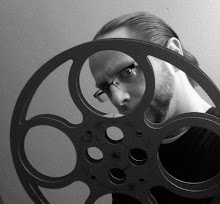“Second star to the right, and straight on ‘till morning!”
This month marks the 70th anniversary of Walt Disney’s PETER PAN.
Based on the 1904 play by J.M. Barrie and often considered to be one of the greatest animated films of all time, PETER PAN was the 14th feature film produced by Walt Disney Animation Studios. It followed the adventures of Wendy Darling and her two little brothers, John and Michael, as they follow Peter Pan, the boy who never grew up, on a magical flight to Never Land. There, they do battle with Peter’s nemesis: Captain Hook.
The flight to Never Land had begun as far back as 1935, when Walt expressed an interest in adapting the play as the second animated feature after SNOW WHITE AND THE SEVEN DWARFS (1937). Walt’s brother Roy secured the rights from the Great Ormond Street Hospital for Sick Children in London, and by 1939 pre-production had begun.
After the bombing of Pearl Harbor in 1941, the U.S. military took control of the studio for the purpose of war and propaganda films, and this halted production on PETER PAN until 1947. Once production resumed, live-action filming with actors was done to provide reference for animators. Bobby Driscoll would provide the voice of Peter, and Kathryn Beaumont would play Wendy. The rest of the cast would be rounded out with Hans Conried (Captain Hook and Mr. Darling), Mary Angel (Mrs. Darling), Bill Thompson (Smee), Paul Collins (John), and Tommy Luske (Michael). The songs were composed by Sammy Cahn and Sammy Fain, with the score composed by Oliver Wallace. The production went through several directors, with the final credited helmers Hamilton Luske, Clyde Geronimi, and Wilfred Jackson.
PETER PAN had its wide release on February 5th, 1953, and was also entered into the Cannes Film Festival that year. Critics were mixed on the deviations from the original play, but praised its overall effectiveness. Over time, PETER PAN has become an elemental part of Disney’s parks and attractions, with Pan’s sidekick fairy Tinkerbell becoming Disney’s symbol of magic.
*
Walt Disney’s PETER PAN was not the very first big-screen adaptation of the character (Paramount did a 1924 silent film), and it certainly would not be the last…but after 70 years it stands as the definitive telling of the tale. Despite a brisk run time of 77 minutes and many liberties taken with the source material, PETER PAN captures the spirit of the story in swift effective strokes; youth, adventure, and the pains of growing up. Its most remarkable feat is that after seven decades it feels like a modern film in its structure and characters…and perhaps most importantly, its presentation of its themes. The near-constant presence of a ticking clock (Hook’s bomb, the clock in the croc, Big Ben, and the clock in the Darling’s home), represents time passing for us all, and having the same actor voice Captain Hook and Mr. Darling hints at just how the children may see their father: as a villain.
In recent years PETER PAN has come under fire for its broad, stereotypical treatment of Native Americans, including an entire musical number about the color of their skin. The treatment is a snapshot of the attitudes towards Native Americans in the 1950’s, along with the environment of Peter’s creator, J.M. Barrie. Despite this scar, PETER PAN has endured and become a pillar of Disney and our culture…which Reel Speak will explore in Part 2 HERE
“All this has happened before, and it will happen again…”


No comments:
Post a Comment
A few rules:
1. Personal attacks not tolerated.
2. Haters welcome, if you can justify it.
3. Swearing is goddamn OK.